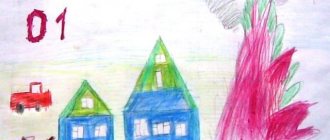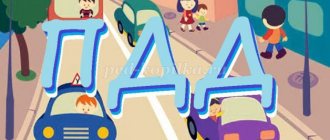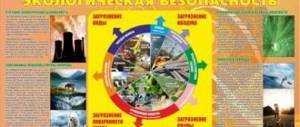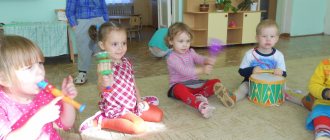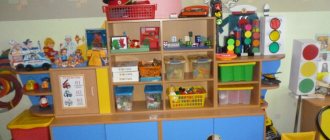Rules for safe behavior at school
School is the place where children and adolescents spend the most time during the school year. Here they gain knowledge, relax during breaks, attend clubs and extracurricular activities. To prevent school life from being overshadowed by unpleasant and dangerous events, there are certain rules.
Some of the requirements are taken into account during construction. School premises are located in special buildings, which, for fire safety reasons, are not designed to be multi-story. In case of fire, it is more difficult to evacuate students, especially children, from high-lying classrooms. For the same reason, primary classes are usually located on the lower floors.
There are certain standards for room illumination, the arrangement of furniture in classrooms, and the alternation of lessons of varying complexity. Medical workers are assigned to schools to monitor the health of students and provide timely assistance if necessary. There are buffets and canteens where schoolchildren can have a snack during breaks.
A team of employees led by the director is responsible for compliance with all requirements for the safe operation of the school. Each employee has his own responsibilities to protect the life and health of children. But without the students themselves following certain rules of safe behavior at school, any efforts by adults will be ineffective.
These rules can be divided into two subgroups:
- safe behavior in everyday school life
- safe behavior in extreme situations.
Everyday safety behavior
During the school day, it is possible to identify periods during which violation of the rules may entail a risk of harm to the health of both the violator and others. In these cases, compliance with safe behavior requirements is especially important.
Safety during recess
Changes between lessons exist so that schoolchildren can relax, move from one office to another, prepare for the next lesson, or go to the cafeteria. Some students understand recreation as running along the corridors and stairs, riding on the railings and fussing with classmates. Such actions are dangerous. During recess, order is monitored by teachers on duty and high school students, who are forced to stop those who are too naughty to prevent injury.
Safe behavior at school during recess:
- walk along corridors and stairs, do not run, do not push others around;
- keep to the right so as not to collide with oncoming traffic;
- on the stairs, stick to the railings, do not slide down them, do not jump over the steps;
- fulfill the requirements of high school students and teachers on duty.
Safety in the classroom
Even such a seemingly calm place as a subject room can turn out to be a source of danger. During a lesson, a careless student can get his fingers pinched by a desk lid, a table drawer, or between chairs. When rocking on a chair, you can accidentally crush your own or your neighbor's leg. Thin edges of textbooks or notebooks threaten hasty or inattentive students with cuts, and even more dangerous is sharpening pencils with a knife or blade. Even the lead of a sharp pencil can cause injury. If handled carelessly, a cabinet door can pinch your hand or hit you on the forehead.
To prevent this from happening, you need to:
- during the lesson, carefully handle educational objects and furniture;
- use safe sharpeners to sharpen pencils;
- When entering or leaving the classroom, do not suddenly open or slam the door.
Work in laboratories and workshops
In physics, chemistry and biology classes, special care is required when performing laboratory work. The same can be said about classes in educational workshops. Instruments, chemical reagents, carpentry and plumbing tools require strict compliance with safety regulations and certain skills in use.
To avoid undesirable consequences of negligence and inability, certain rules should be followed:
- before starting work, listen to the teacher’s safety instructions;
- while working, follow the instructions exactly;
- do not allow pranks or negligence when performing work or being near workers;
- Do not use equipment and reagents for other purposes.
Safe behavior in the gym and on the sports field
In physical education lessons, both the equipment of the gym or school stadium and the students’ own behavior can pose a danger. A physical education lesson is perceived by many as a release, an opportunity to move to relieve the tension accumulated during other classes.
However, all of the following must occur within the rules:
- enter the gym or playground only with the permission of the teacher;
- have the prescribed sports uniform for training;
- before performing the exercises, listen carefully to the explanations;
- do not touch sports equipment and equipment without the permission of the teacher;
- observe the rules of cultural behavior, do not violate discipline in the gym, on the court and in the locker rooms.
These rules for safe behavior at school are established for the normal course of the educational process. However, it is possible that emergency situations may arise, during which the inability to act competently can cost health, or even life, and often not just one person, but many.
SAFETY IN LABOR TRAINING LESSONS IN PRIMARY CLASSES 1. - presentation
SAFETY IN WORK EDUCATION LESSONS IN PRIMARY CLASSES 1
2 Safety precautions. 1 – organization of the workplace in the lesson. 1 – organization of the workplace in the lesson. 2 – working with scissors 3 – working with glue 4 – working with a needle. 5 – working with a knife 6 – working with an awl 7 – working with a compass
T.B.1 General safety rules. 1. Start work only with the permission of the teacher. When the teacher speaks to you, pause your work. Don't get distracted while working. 2. Do not use tools whose handling rules have not been studied. 3. Use the tool only for its intended purpose. Do not make holes with the blades of the scissors. Do not use nail cutters or pliers. Use pliers, not wire cutters, to remove nails. 4. Do not work with faulty or blunt tools. 5. When working, hold the instrument as the teacher showed. 6. Store tools and equipment in the designated place. Tools and equipment should not be stored in bulk. 7. Keep your work area clean and tidy. 8. Place tools and equipment in the order indicated by the teacher. 9. Don’t talk while working, don’t be distracted by other things.
1. Use scissors with rounded ends. Store the scissors in the specified place and position. 2. When working, carefully monitor the direction of the cut. 3. Do not use blunt scissors or loose hinges. 4. Do not hold scissors with the blades facing up. 5. Do not leave scissors open. 6. Don't cut with scissors on the go. 7. Do not approach your friend while cutting. 8. Pass the closed scissors to your friend, rings first. 9. While cutting, hold the material with your left hand so that your fingers are away from the scissor blades. 4
5 There is a simple law for scissors: First, close them. And always put the blades away from you, sparing yourself. If you want to give them to your friend, don’t forget to give her the rings in advance
1. Work with glue only on the backing sheet. 2. Apply the glue to the work surface only with a brush. 3. After work, wash your brush and hands with soap. T.B.3 Rules for working with glue.
1. Don't throw needles. Do not stick them into fabric or your clothing. Never put needles in your mouth. 2. While working, stick the needles into a special pad. Put the pillow in the box. 3. Store spare needles in a needle case in a dry place. 4. Check the number of needles before starting and after finishing work. Be sure to find the missing needles. 5. When sewing, use a thimble that fits your finger. 6. Do not use needles instead of pins. 7
T.B.5 Rules for handling a knife. 1. Store the knife in the specified place with the blade closed. 2. Do not use a dull or defective knife. 3. Do not hold the knife with the blade facing up. Hand the knife to your friend with the handle first. 4. Cut a stack of paper and cardboard along the fold using a ruler with a high side. 5. When planing slats, keep your hand above the blade. You can only cut on your own. 6. Use a knife with a rounded blade. Do not use a folding knife with a damaged or too tight hinge.
T.B.6 Rules for handling an awl. 1. Do not use a thin long (stationery) awl. 2. Use the awl only for its intended purpose. 3. Do not pierce hard objects with a smooth surface with an awl: dried acorns, cones, nut shells.
1. Keep the compass in a case. 2. Do not hold the compass with its feet up. 3. When working, carefully stick the needle into the right place. Place cardboard under the paper. 4. Hand the closed compass to your friend, head first. 5. After work, put the compass in its case. 10
T.B. 8 T.B. 8 Rules for safe work with plasticine. Choose the desired color of plasticine for the job. Cut the required amount of plasticine into a stack. Warm a piece of plasticine with the warmth of your hands so that it becomes soft. At the end of the work, dry your hands well with a dry soft cloth and only then wash them with soap.
T.B. 9 Rules for working with natural materials – Do not break growing trees, shrubs, or grass. – Do not treat damp, dirty roots and branches. – Process cones, acorns, chestnuts on a wooden board. – Do not make holes in dry chestnuts or acorns with an awl: they must be drilled. – Trim the cones carefully and carefully. – Store natural materials in a dry place. 12
13
Safe behavior in extreme situations
During classes, situations may arise that disrupt the usual flow of school life.
Among them are the following:
- Fire, smoke.
- Threat of hurricane or flood.
- Detection of explosive objects and ammunition.
Each of the listed situations provides for a certain procedure, but the very first thing that needs to be done when any of them arises is to notify the school staff, and, if necessary, specialized services: the police or the Ministry of Emergency Situations.
Actions in case of fire or smoke
If a fire or heavy smoke is detected during school hours, the most important thing is not to panic and remain calm. More people suffer from panic during emergencies than from the danger itself. Knowing what to do and practicing the necessary skills will help you avoid serious losses.
In case of fire or smoke, follow these steps:
- If there is no immediate danger to those in the classroom and no evacuation signal has been received, the correct thing to do is not to leave the premises, close the windows and ventilation openings and seal the cracks with wet rags to prevent the entry of smoke and poisoning by combustion products, and then calmly wait for the firefighters.
- When receiving a signal about the need to evacuate, students, together with the teacher, go outside in an organized manner along the path provided for by the fire evacuation plan. The plan should be located in a visible place. It is better to consider it and understand the ways out in advance, in a calm atmosphere, without waiting for the need.
- During evacuation, schoolchildren can take outerwear from the wardrobe only if there is no immediate danger of approaching and causing a crush, as directed by the teacher. In other cases, they leave school without outer clothing and wait at a safe distance for further orders from the director or other responsible persons.
- When passing through smoky corridors or staircases, you must remember that there is less smoke below. It’s better to walk crouched down, and if necessary, even on all fours. Under no circumstances should you lag behind your comrades.
- If you feel bad and realize that it is impossible to continue moving, it is recommended to shout loudly, attracting the attention of the teacher and classmates. In such a situation, it is difficult for a teacher to keep track of everyone’s condition, so he needs to be notified of his or a friend’s poor health. If possible, personal protective equipment should be used, for example, covering your face with a wet scarf, mitten or hat to protect your respiratory system from smoke.
- After leaving the danger zone, you need to check the number of people leaving, determine if anyone has fallen behind, and provide the necessary assistance to the victims.
Natural disaster threat
When there is a threat of a natural disaster, such as a hurricane or flood, there is no way to keep students in school or send them home without putting them in danger. As the head of the school's civil defense staff, the director is familiar with the rules for dealing with dangerous situations and is fully responsible for the safety of students, and therefore decides on the need to use prepared shelters.
Detection of explosive objects, ammunition
If there are explosive objects on school grounds, for example, wartime ammunition, the only thing a student should do is not to approach, much less touch, them. Notify seniors about the find, who will call specialists. If an evacuation is announced, follow the same rules as in case of a fire: go out in an organized manner, checking to see if anyone remains in the danger zone.
If you find suspicious bags, packages, etc., you need to act in the same way: without touching anything, inform your elders.
By following the rules of safe behavior at school, you can avoid situations that are dangerous both for yourself and for others.
Student safety Open lesson on life sciences in grades 1-4, Municipal Educational Institution Pridannikovskaya Secondary School - presentation
Student safety Open lesson on life sciences in grades 1-4, Municipal Educational Institution Pridannikovskaya Secondary School
A stranger is someone whom you don’t know or your parents don’t know. In this fairy tale, Pinocchio believed what Basilio the cat and Alice the fox told him, after which he was left without money. The cat and the fox actually wanted to drown him. It's good that Pinocchio is made of wood! If a stranger starts talking to you, be careful! "The Adventures of Pinocchio"
A person you know is someone you know and your parents or adults who care for you know Parents Relatives Teachers and adult acquaintances school74.ru chita.rfn.ru
What does a stranger look like? A stranger may look kind and polite “Kolobok” Kolobok did not receive permission from his grandparents, but still went for a walk. The hare, wolf and bear seemed dangerous to him. But the fox... She was so affectionate, so kind, smiling, that he came closer to her. What happened to him??? Because in fact she was very cunning and evil!
If you decide to go for a walk, get permission from the adults you know! “Kolobok” Kolobok went for a walk without receiving permission from his grandparents. Therefore, he was in big trouble - he was eaten by a fox. If you are going somewhere, notify them personally or leave a note indicating the address.
Take gifts only from people you know! “Snow White” Snow White took an apple from the old woman, who seemed so kind to her. The apple turned out to be poisoned, Snow White was poisoned and fell asleep for a long time. Don't take anything from strangers!
Keep secret information about yourself! “Little Red Riding Hood” Little Red Riding Hood made a mistake twice: 1. She maintained a conversation with an unfamiliar wolf. 2. I told him all the secrets: where he was going, who he was going to, how to properly knock on the door to grandma. As a result, the wolf devoured the grandmother and almost ate Little Red Riding Hood. It's good that the hunters saved everyone. Don't tell strangers anything about yourself or your loved ones!
There are many more good people than bad people. Therefore, if you or your friends are attacked by a stranger, you need to shout loudly: “You are a stranger, I don’t know you! Help! Fire!" Then those around you will understand that the child is in trouble and will come to help.
Who can help us if we get into trouble? Little Red Riding Hood received help from hunters who saved both her and her grandmother.
People in uniform will help us. Security guards. Police officers. Military. Feel free to contact them for help!
How to safely end a conversation with a stranger? Step 1. Assess the situation. I need to tell myself that in front of me is a stranger. It doesn’t matter who it is - a girl, a boy, a grandfather, a young woman - if it’s a stranger, then we behave almost the same with all of them. Step 2. Keep your distance! You need to measure a distance of 2 meters on the floor at home and remember it. You can only have a brief conversation with a stranger at a safe distance. If a person approaches, you must immediately leave or run in a safe direction. Step 3. Skillfully stop the conversation at the 5th second. Among the attackers there are excellent psychologists who can “chat” even an adult, not to mention a child. Therefore, the conversation can last 5-10 seconds, after which it is necessary to interrupt the conversation mid-sentence and leave. Step 4. We go to a safe place. This means you need to go to your parents, teachers or other familiar adults, or go home or to school.
What can a stranger say? Unfamiliar man: 1. The kitten climbed into the pipe, my hand can’t fit in there, please get it out. 2. The puppy crawled through a hole in the fence near those bushes. Come, call him, give him this sausage. He will listen to you. 3. Raspberries are ripe on my plot, but I don’t like them. Do you want to eat to your heart's content? 4. It’s my son’s birthday, I want to surprise him - buy him a jacket. Can you help me - I need to try on a jacket in the store. Unfamiliar woman: 5. Help me look for my little daughter in the park, she got lost in the bushes. 6. Boy, look what time it is on my watch? I forgot my glasses at home. Nice girl of 18 years old: 7. Boy, you are so cute, help me find my earring, I dropped it here. 8. Girl, take me to the zoo, I don’t know the way. There is no need to listen to a stranger; you need to leave immediately after the first words.
In The Lion King, Mufasa dies in a crowd of antelopes. Why did the strong and wise lion die? mediamovies.ru levking.3bb.ru
Because being in a crowd is very dangerous even for adults, especially for children. You must follow safety rules: 1. It is better not to get into the crowd. 2. If you find yourself in a crowd, stick to the adults you came with. 3. If you are alone in a crowd, try to get out of it by turning to the side. 4. Don't fall! If you fall, get up immediately! 5. Don’t be shy about asking other adults for help (remember how Mufasa saved Simba!)
Knowing the safety rules, you, like Simba, will become strong and wise!
Basic forms of work on teaching safe behavior at school
Currently, a certain set of actions aimed at developing safe behavior skills in schoolchildren is regulated by appropriate instructions and methodological recommendations.
In all schools, one way or another, the following set of safety training activities is involved:
- safety briefings with their registration in journals of the appropriate type (introductory, repeated, targeted, certified by the student’s signature or without it);
- preventive conversations;
- coverage of relevant topics during the study of special courses, as well as individual topics of curriculum subjects;
- educational events (evenings, meetings, classes);
- interaction with other government and public structures (medics, sports organizations, law enforcement agencies).
Schools also carry out educational and preventive activities among parents, whose shortcomings in educational work are often forced to be corrected by teachers.
Rules for safe behavior at school are most often recorded in its charter, Rules for students and other similar documents. Daily, so to speak, continuous supervision of their compliance is traditionally assigned to duty teachers and senior students.
AGREED
Labor safety inspector _______________________
" " ____________________ 200___
APPROVED I APPROVED
" " ________________ 200__g.
INSTRUCTION NO.
SAFETY INSTRUCTIONS FOR STUDENTS WHEN WORKING WITH FERTILIZERS
4. Compliance with these instructions is mandatory for all students working
school corner of wildlife, at the school educational and experimental site.
2. Risk of injury:
- when fertilizing plants;;
- when preparing mineral solutions
- in case of violation of TB instructions
12. The teacher leader must have a first aid kit equipped with the necessary
medicines and dressings for first aid
to the victims.
13. Work in robes or aprons.
14. It is necessary to know the recipe for preparing mineral solutions.
15. Use factory packaging, undamaged and with instructions for use.
16. Do not use insecticides to control insect pests.
17. Houseplants should be treated with soap or tobacco solution.
23. Put on work clothes and protective gloves.
24. Listen carefully to safety instructions during work.
25. Receive a training assignment from your supervisor.
26. Get mineral fertilizers and dishes.
1. Perform all actions only as directed by the teacher.
2. Maintain personal hygiene.
5. You should only perform the work specified by the training assignment.
4. Do not make sudden movements, do not touch foreign objects.
12. Maintain order and discipline.
11. Do not go anywhere without the teacher’s permission.
12. Take fertilizers only with a special plastic spoon or spatulas.
13. Stir the solution with a stirrer at least 50 cm long.
14. Be careful and wear a protective gauze bandage.
15. Add water carefully, along the wall of the dish.
1. If you feel unwell, inform the teacher.
3. If injured, immediately report the incident to the teacher,
he will help you.
6. In case of fire, leave the premises immediately.
4. If the solution gets on the skin of your hands or face, rinse them thoroughly with running water.
1. Clean up the remaining packages of mineral fertilizers.
3. Take off your work clothes and put them in order.
3. Check the safety of the workplace.
4. Wash your face and hands thoroughly with soap.
5. Report any shortcomings discovered during work to the teacher.
Deputy Director for Educational Work _______________________
Teacher of biology, agricultural labor ______________________
Problems of teaching child safety rules
Although the media is now filled with reports of accidents with children and their unreasonable behavior that is dangerous to life and health, it should still be recognized that the vast majority of these incidents occur outside the walls of educational institutions. Thus, teachers are not and cannot be directly to blame in such cases. However, their prevalence indicates that efforts to teach children safety are not always effective.
In addition to cases of a formal attitude towards it, there are also completely objective reasons. Perhaps the most important of them is the inherent desire of people (and young people in particular) for self-affirmation through risk. This quality, properly targeted, can be very useful and produces pioneers and fighters. But in conditions of a lack of real impressions, it can be expressed in children in the desire to demonstratively break any rules, just to prove their courage and independence. This desire is aggravated by the efforts of the information space, which instills a cult of disregard for the rules.
In addition, in our time it very often happens that parents, and especially teachers, fearing responsibility for damage to their children, strive to protect them from any risks at all, even illusory ones. But a small bruise or scratch will not cause any harm to the child’s health. On the contrary, their absence can be much more dangerous, since the child will not see the possible consequences of his actions and will not be motivated to listen to safety requirements. This position was once brilliantly developed by the Soviet teachers, the Nikitins.
Finally, the biggest harm of computer “shooters” is not that they teach violence (although this is bad), but that you can “reboot” into them at any time. Thus, the child is instilled with the idea that any, even the most dangerous situation can be easily corrected. And how can he understand that this is not so if in his life he has never had to face even the tiniest danger?
Possible ways to improve the situation regarding teaching safe behavior
All of the above does not mean that the work of safety training should be completely restructured. Many of its components have proven their importance and effectiveness.
Naturally, safety instructions for children are necessary, especially when conducting laboratory work, working on a computer or in workshops, as well as when traveling or excursions. Conscientious duty of teachers almost guarantees that students follow the rules of safe behavior at school. Conversations with parents, medical monitoring and meetings with law enforcement officers are necessary and useful. However, changing some emphasis in educational work can make safety training more effective.
We can offer:
- when studying the rules of safe behavior in public places, indicate that following them means protecting others, weaker ones, that is, showing strength and courage;
- refuse to position safety as a goal, since it is not close to children, but declare it a means (not to upset parents, not to harm friends, to preserve strength, health and life for great things);
- encourage the development of children's sports and outdoor games (traditional “catch-up” and “Cossack robbers” will relieve physical inactivity and develop team spirit, and at the same time help to “release” excess energy);
- introduce more activities with elements of adventure into the practice of educational work (hiking, “Zarnitsa”);
- the pedagogical community to put pressure on the media in order to ensure the correct placement of semantic accents in the presentation of news.
Perhaps these simple changes will help raise our children to be strong, brave, proactive, and channel their love of adventure and desire for self-affirmation into a creative direction. Then they will truly be safe themselves and will not become a threat to others.
